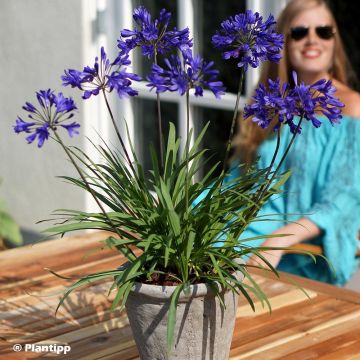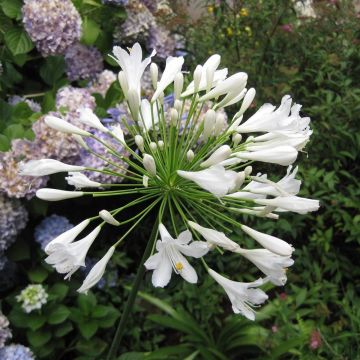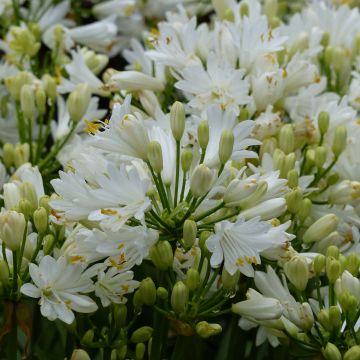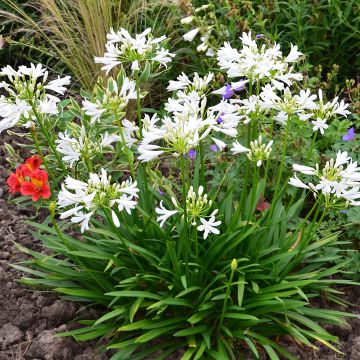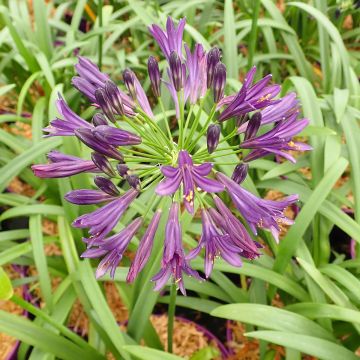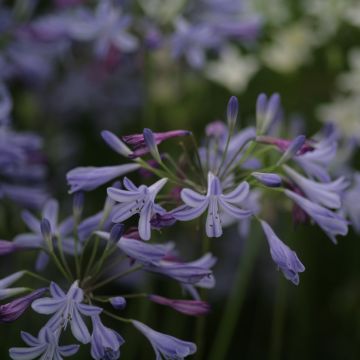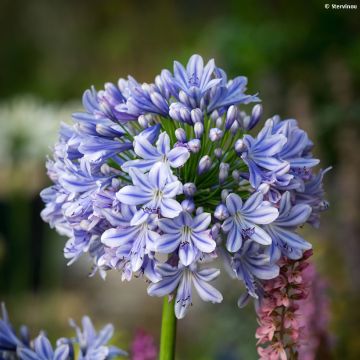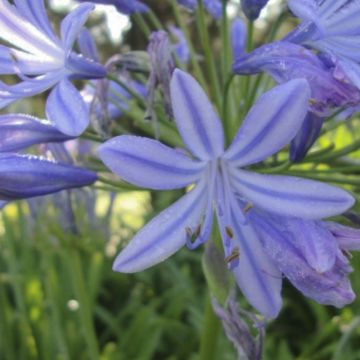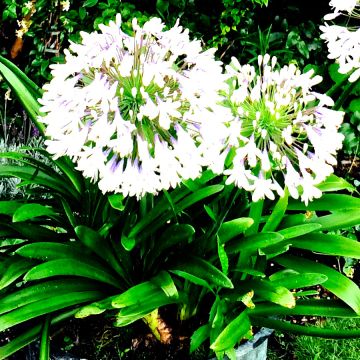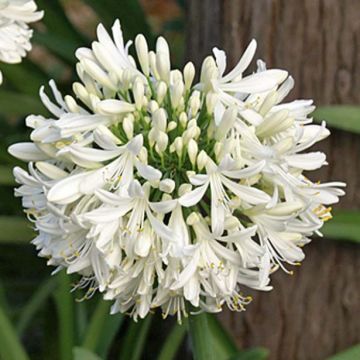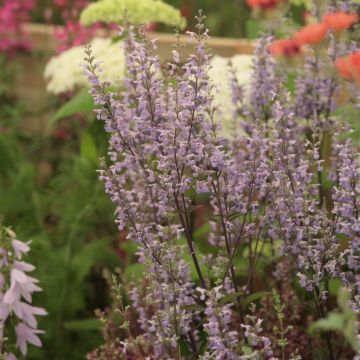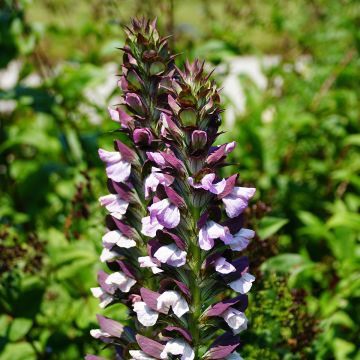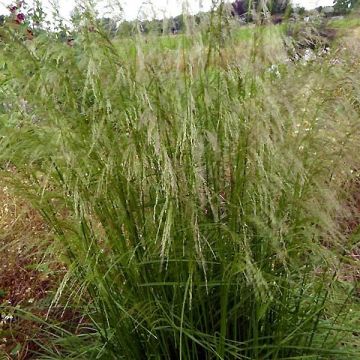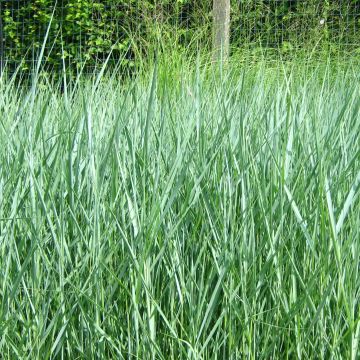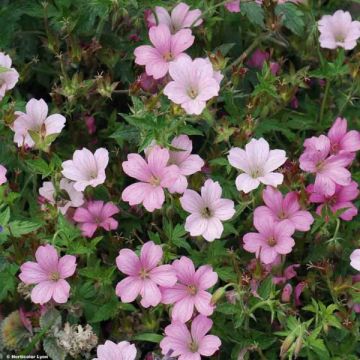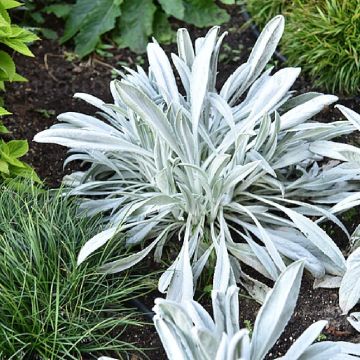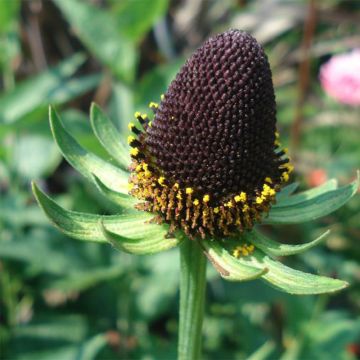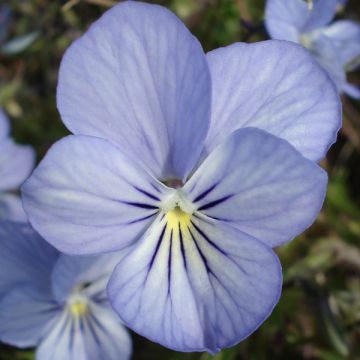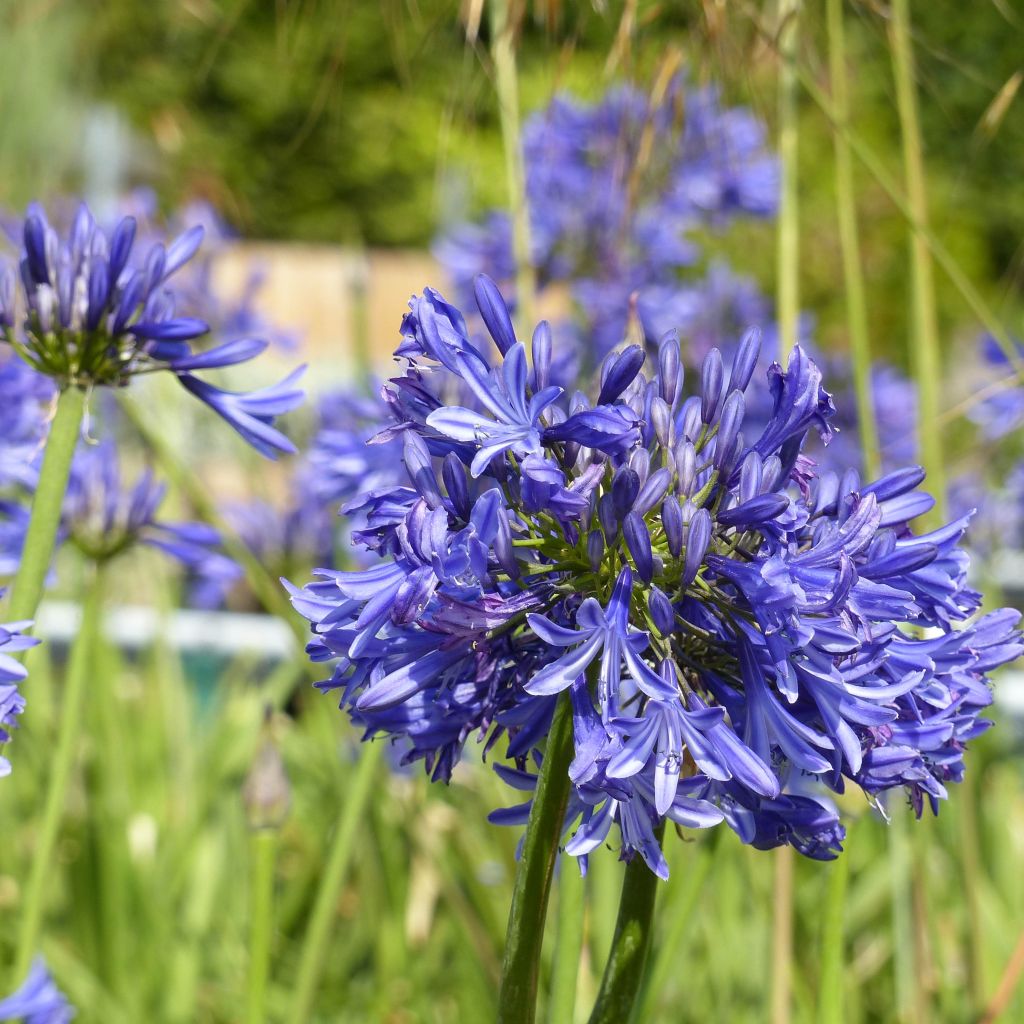

Agapanthus Navy Blue
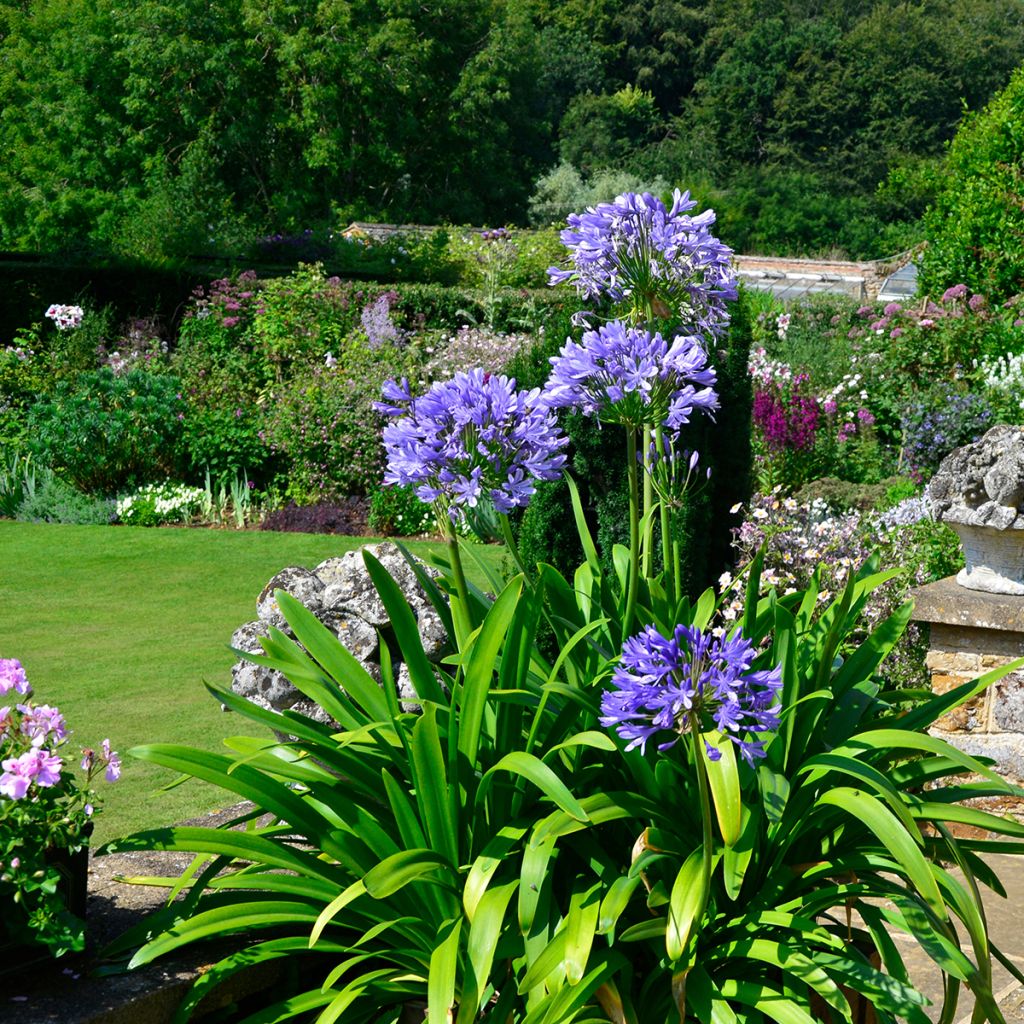

Agapanthus Navy Blue
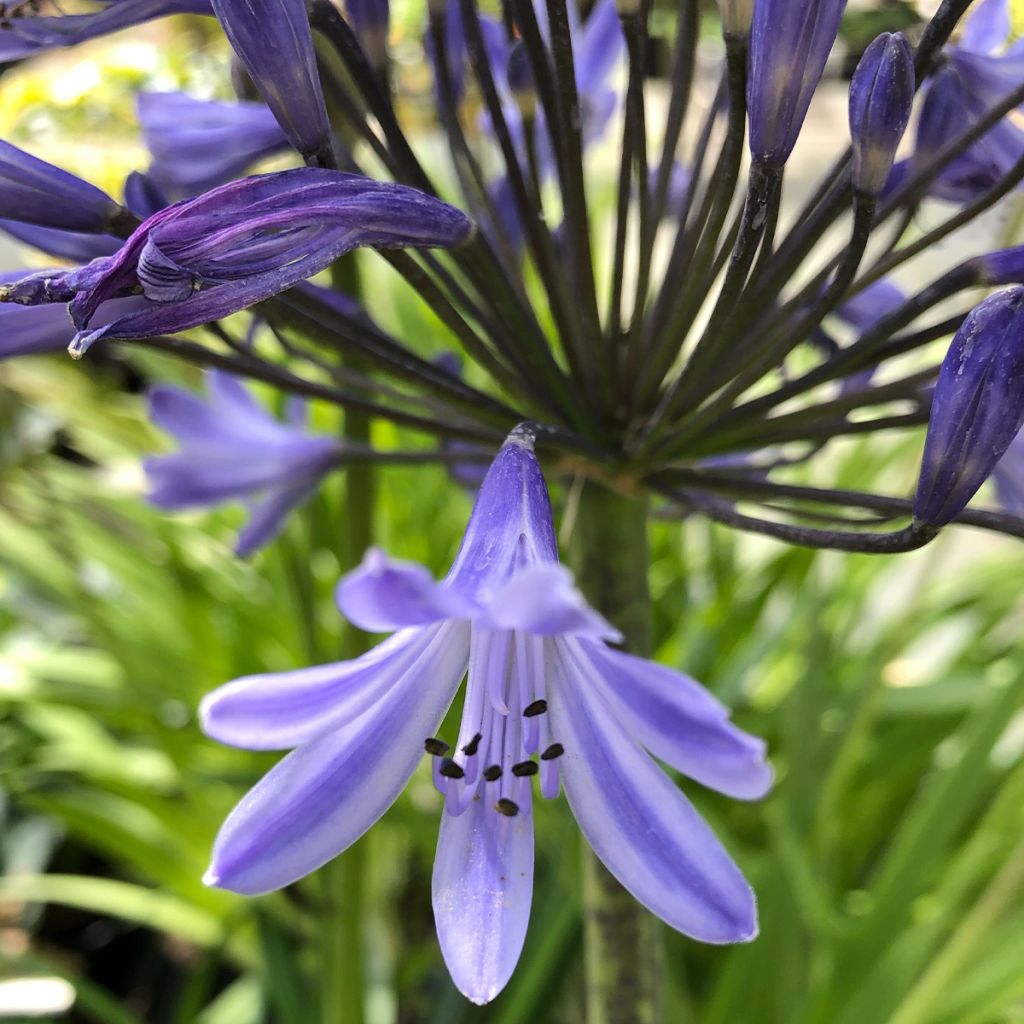

Agapanthus Navy Blue
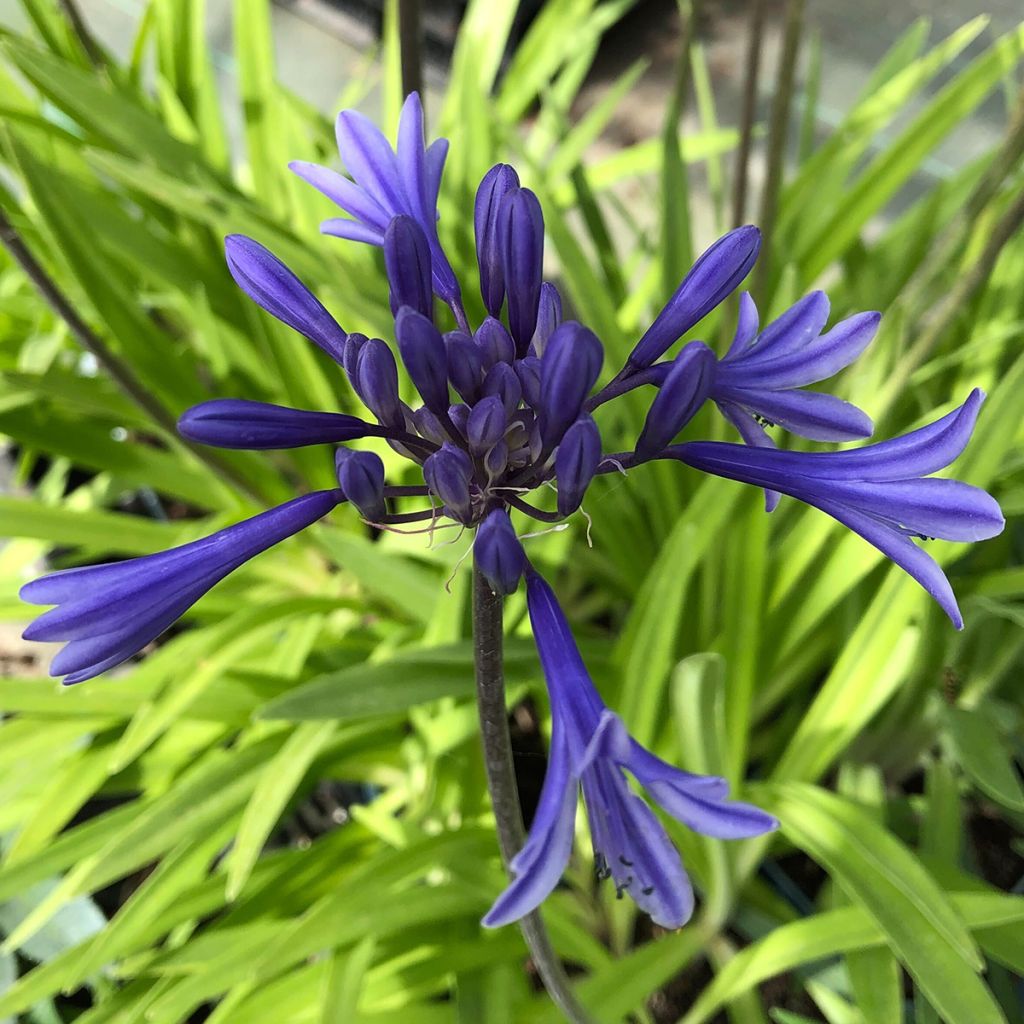

Agapanthus Navy Blue
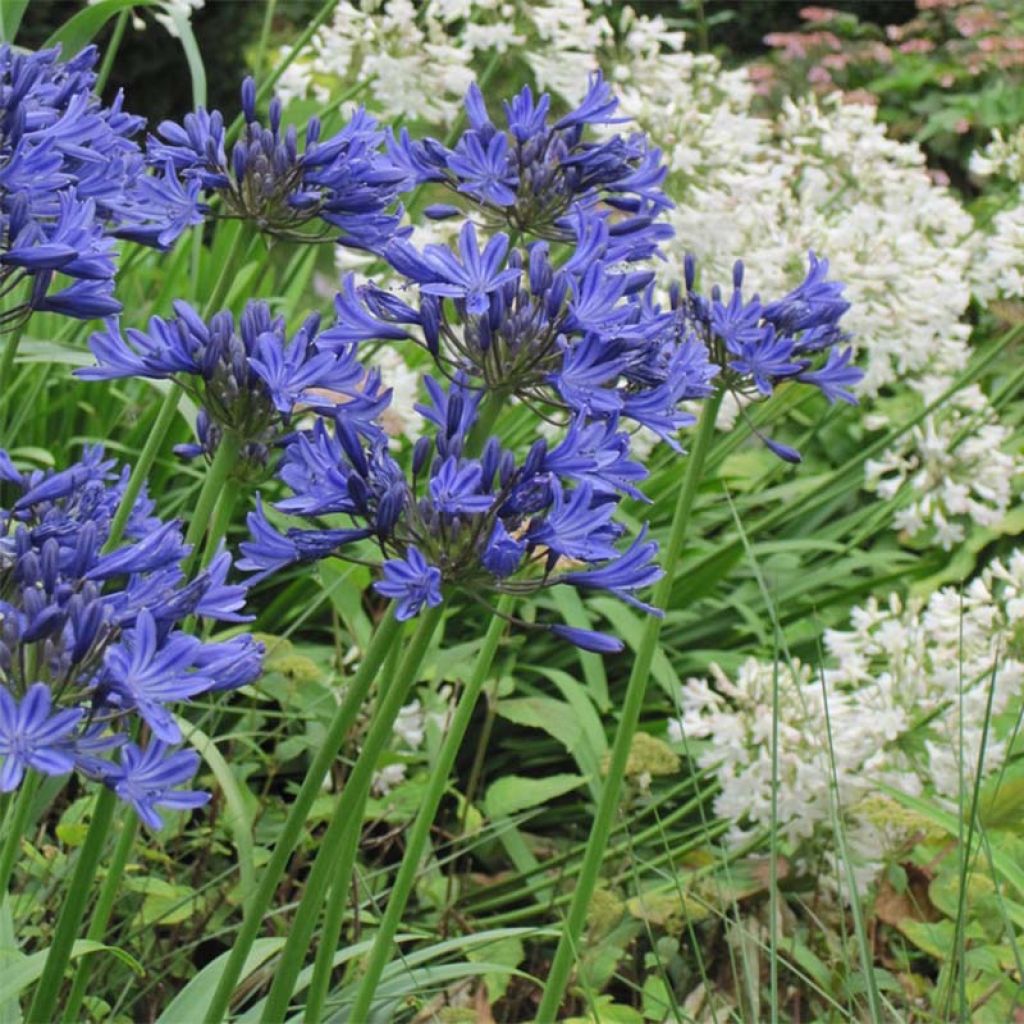

Agapanthus Navy Blue
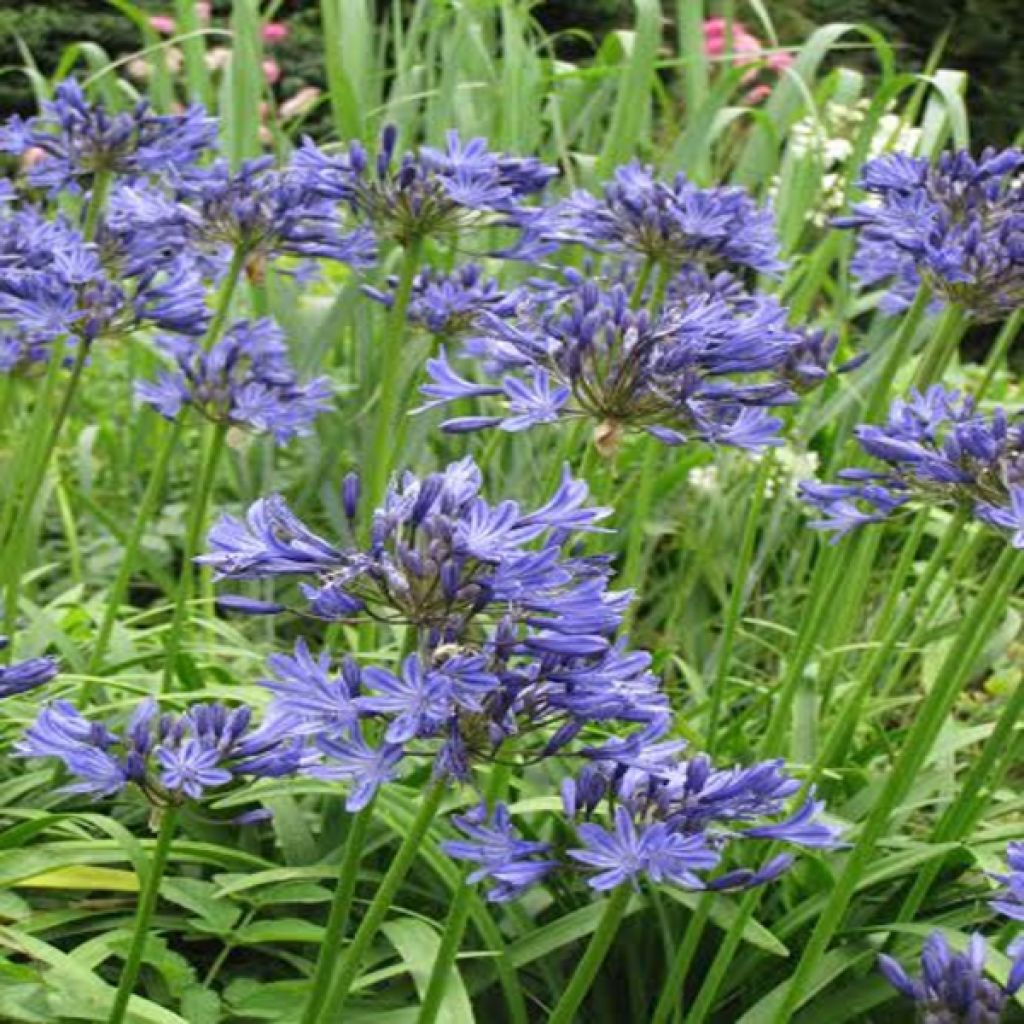

Agapanthus Navy Blue
Agapanthus Navy Blue
Agapanthus Navy Blue
African Lily, Lily of the Nile
This item cannot be shipped to the selected country
Delivery charge from €5.90
Delivery charge from €5.90
More information
Schedule delivery date,
and select date in basket
This plant carries a 12 months recovery warranty
More information
We guarantee the quality of our plants for a full growing cycle, and will replace at our expense any plant that fails to recover under normal climatic and planting conditions.
From €5.90 for pickup delivery and €6.90 for home delivery
Express home delivery from €8.90.
From €5.90 for pickup delivery and €6.90 for home delivery
Express home delivery from €8.90.

Does this plant fit my garden?
Set up your Plantfit profile →
Description
Agapanthus 'Navy Blue', also known as 'Midnight Star', is a variety of Agapanthus that is very popular for its umbels of deep and intense navy blue flowers. This particularly floriferous and vigorous variety is medium-sized. Its deciduous foliage in wide ribbons of bright green elegantly covers the ground throughout the beautiful season. When its flowers appear, usually in July-August, it metamorphoses into a very blue airy bouquet. Ideal in large pots on the terrace, or planted in small groups near high-traffic areas, this moderately hardy (-10°C (14°F)) beautiful plant should be installed in well-drained soil, in full sun, and should never lack water during its growth period.
Agapanthus are plants of the lily family, native to South Africa, which hybridize naturally in the wild or in our gardens. Agapanthus 'Navy Blue' stands out for its great floribundity. This plant develops and multiplies quickly from a stump with fleshy rhizomes, forming a dense clump of linear and thick foliage, of a shiny green, at least 40cm (16in) in diameter, expanding over time. The abundant flowering takes place in summer, more or less early depending on the climate, and lasts about 6 weeks. Strong and sturdy stems about 60cm (24in) tall carry light hemispherical umbels, 10 to 13cm (4 to 5in) in diameter, composed of about thirty small bell-shaped flowers of ultramarine blue, carried by long peduncles.
The 'Navy Blue' Agapanthus is a delightful variety to integrate into a flower garden, bringing an exotic and light touch to sunny borders, while requiring little maintenance. This variety should be reserved a somewhat protected and south-facing location in our coldest regions, and it is important not to forget to apply a thick mulch on the stump in winter, as a precaution. Whether in a border, rockery, pot or planter, the 'Navy Blue' Agapanthus is suitable for a wide range of uses. It is very beautiful when associated with other mauve, white or blue varieties in a clean decor. It is also very decorative in plantings with an exotic connotation, with Kniphofias, Hemerocallis, shrubby salvias or Phlomis fruticosa.
Report an error about the product description
Agapanthus Navy Blue in pictures
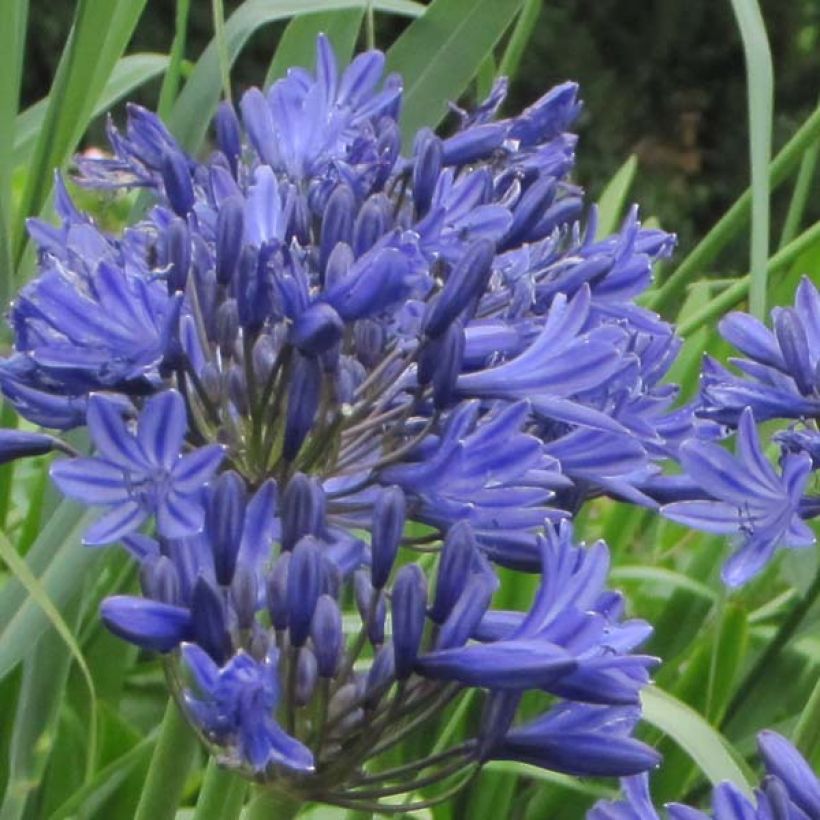

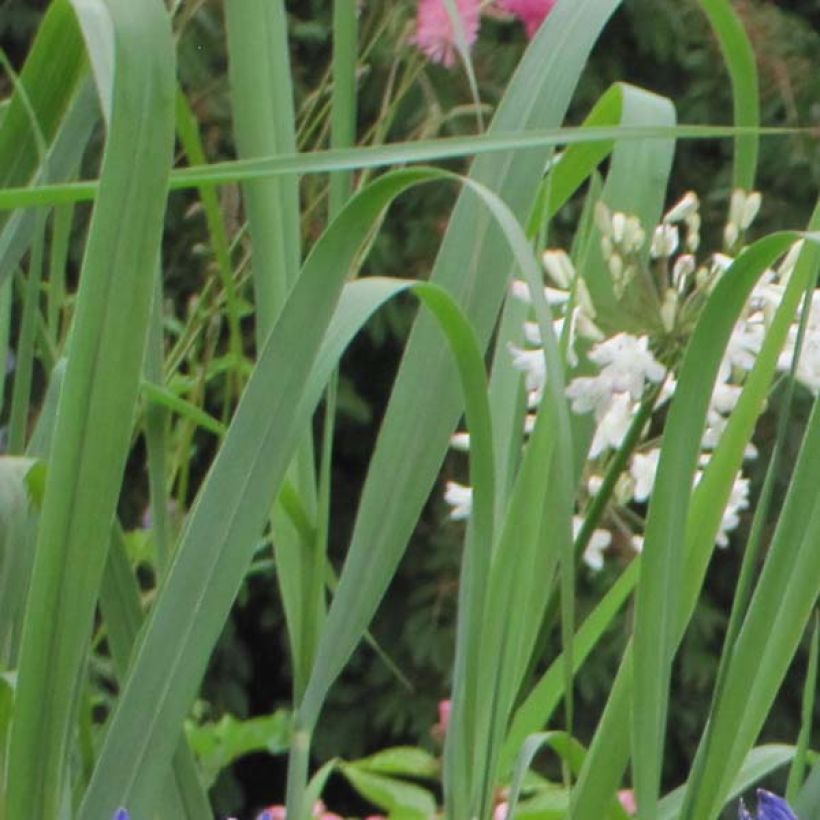



Flowering
Foliage
Plant habit
Botanical data
Agapanthus
Navy Blue
Alliaceae - Liliaceae
African Lily, Lily of the Nile
Cultivar or hybrid
Other Agapanthus - Lily of the Nile
Planting and care
The 'Navy Blue' Agapanthus is grown in full sun in a warm location, in a protected area facing south. It withstands drought well. Place it in a soil that is rich and moist, but above all, very well-drained in winter. Water Agapanthus regularly during the growth period (twice a week). However, avoid watering them while the plant is dormant. In winter, Agapanthus fears excessive moisture and does not like waterlogged soil. That's why you should mulch the base with a layer of dead leaves about 20cm (8in) thick on the plants' stump and cover them with a mesh to prevent wind damage. Snow is a very good protection against excess moisture and cold. If potted, bring the plant indoors to a non-heated but frost-free area. When planting, place it 30cm (12in) deep in a pot with leaf compost and compost, as the roots are fleshy. Once established in the ground, do not disturb the agapanthus anymore. Remove dead leaves in autumn. Cut back the faded stems so that the plant does not exhaust itself producing seeds.
Planting period
Intended location
Care
-
, onOrder confirmed
Reply from on Promesse de fleurs
Summer flowering perennials
Haven't found what you were looking for?
Hardiness is the lowest winter temperature a plant can endure without suffering serious damage or even dying. However, hardiness is affected by location (a sheltered area, such as a patio), protection (winter cover) and soil type (hardiness is improved by well-drained soil).

Photo Sharing Terms & Conditions
In order to encourage gardeners to interact and share their experiences, Promesse de fleurs offers various media enabling content to be uploaded onto its Site - in particular via the ‘Photo sharing’ module.
The User agrees to refrain from:
- Posting any content that is illegal, prejudicial, insulting, racist, inciteful to hatred, revisionist, contrary to public decency, that infringes on privacy or on the privacy rights of third parties, in particular the publicity rights of persons and goods, intellectual property rights, or the right to privacy.
- Submitting content on behalf of a third party;
- Impersonate the identity of a third party and/or publish any personal information about a third party;
In general, the User undertakes to refrain from any unethical behaviour.
All Content (in particular text, comments, files, images, photos, videos, creative works, etc.), which may be subject to property or intellectual property rights, image or other private rights, shall remain the property of the User, subject to the limited rights granted by the terms of the licence granted by Promesse de fleurs as stated below. Users are at liberty to publish or not to publish such Content on the Site, notably via the ‘Photo Sharing’ facility, and accept that this Content shall be made public and freely accessible, notably on the Internet.
Users further acknowledge, undertake to have ,and guarantee that they hold all necessary rights and permissions to publish such material on the Site, in particular with regard to the legislation in force pertaining to any privacy, property, intellectual property, image, or contractual rights, or rights of any other nature. By publishing such Content on the Site, Users acknowledge accepting full liability as publishers of the Content within the meaning of the law, and grant Promesse de fleurs, free of charge, an inclusive, worldwide licence for the said Content for the entire duration of its publication, including all reproduction, representation, up/downloading, displaying, performing, transmission, and storage rights.
Users also grant permission for their name to be linked to the Content and accept that this link may not always be made available.
By engaging in posting material, Users consent to their Content becoming automatically accessible on the Internet, in particular on other sites and/or blogs and/or web pages of the Promesse de fleurs site, including in particular social pages and the Promesse de fleurs catalogue.
Users may secure the removal of entrusted content free of charge by issuing a simple request via our contact form.
The flowering period indicated on our website applies to countries and regions located in USDA zone 8 (France, the United Kingdom, Ireland, the Netherlands, etc.)
It will vary according to where you live:
- In zones 9 to 10 (Italy, Spain, Greece, etc.), flowering will occur about 2 to 4 weeks earlier.
- In zones 6 to 7 (Germany, Poland, Slovenia, and lower mountainous regions), flowering will be delayed by 2 to 3 weeks.
- In zone 5 (Central Europe, Scandinavia), blooming will be delayed by 3 to 5 weeks.
In temperate climates, pruning of spring-flowering shrubs (forsythia, spireas, etc.) should be done just after flowering.
Pruning of summer-flowering shrubs (Indian Lilac, Perovskia, etc.) can be done in winter or spring.
In cold regions as well as with frost-sensitive plants, avoid pruning too early when severe frosts may still occur.
The planting period indicated on our website applies to countries and regions located in USDA zone 8 (France, United Kingdom, Ireland, Netherlands).
It will vary according to where you live:
- In Mediterranean zones (Marseille, Madrid, Milan, etc.), autumn and winter are the best planting periods.
- In continental zones (Strasbourg, Munich, Vienna, etc.), delay planting by 2 to 3 weeks in spring and bring it forward by 2 to 4 weeks in autumn.
- In mountainous regions (the Alps, Pyrenees, Carpathians, etc.), it is best to plant in late spring (May-June) or late summer (August-September).
The harvesting period indicated on our website applies to countries and regions in USDA zone 8 (France, England, Ireland, the Netherlands).
In colder areas (Scandinavia, Poland, Austria...) fruit and vegetable harvests are likely to be delayed by 3-4 weeks.
In warmer areas (Italy, Spain, Greece, etc.), harvesting will probably take place earlier, depending on weather conditions.
The sowing periods indicated on our website apply to countries and regions within USDA Zone 8 (France, UK, Ireland, Netherlands).
In colder areas (Scandinavia, Poland, Austria...), delay any outdoor sowing by 3-4 weeks, or sow under glass.
In warmer climes (Italy, Spain, Greece, etc.), bring outdoor sowing forward by a few weeks.

































